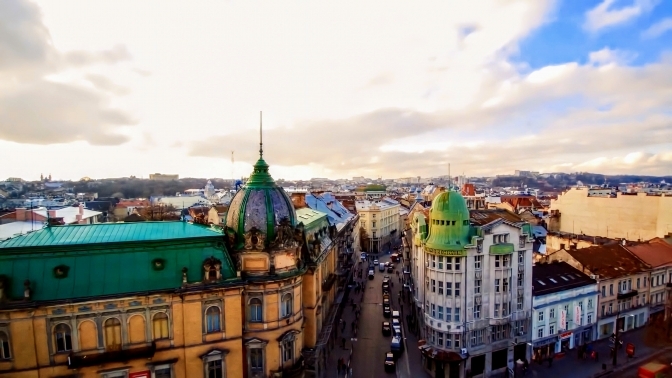
[For urgent updates please follow Ukrainian Freedom News on Telegram]
The existence of banking in Lviv in the 17th and 18th centuries is proved by the so-called Armenian «Pius Montis», which appeared on the street Krakivska, next to the Armenian Cathedral. Skilled Armenians well understood the advantages of low credit, so for a long time, each of their temples had a separate institution that provided funds as collateral. In 1792, in order to regulate property relations, the Austrian government united all these small institutions into one and allowed the payment of deposits at eight per cent. The profit was supposed to go to help the Armenian clergy.
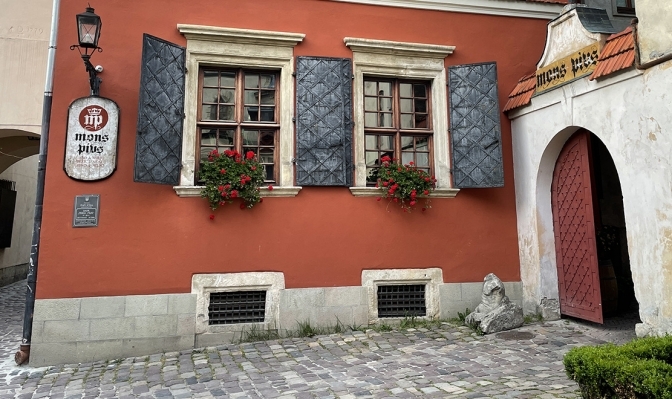
This building once housed an Armenian bank
This financial institution existed until the beginning of the 20th century, and Franciszek Jaworski left its detailed description in the book «Lwów stary i wczorajszy», published in 1910. In particular, he wrote: «Mostly the proletariat rushes here with their meager jewellery and huddles to the barred windows, behind which family heirlooms and wedding rings disappear, but for this, they receive a few guilders... which are sometimes very necessary.»
In the 19th and early 20th centuries, many financial and credit institutions emerged, for which magnificent buildings were built and have survived to this day.
In 1841, the Land (Regional) Credit Society was founded in Galicia. The institution was local, its operations did not extend to the entire state, being limited only to the provinces of Galicia and Bukovyna. The Land Credit Society provided loans and mortgages with one per cent amortization.
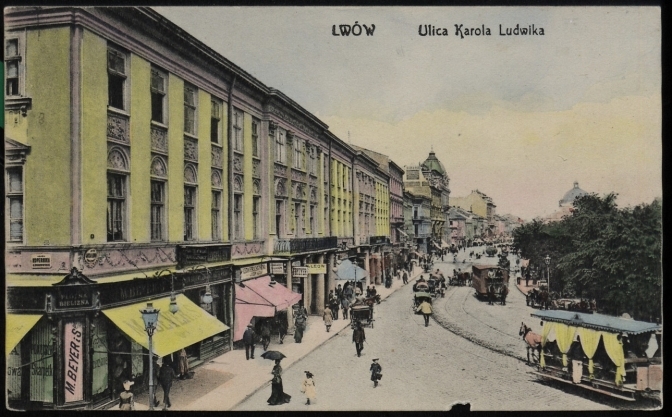
Hausner’s house on the street Karlol-Ludvik, 1/3 (now Svobody Ave.) Postcard of 1906
Since 1849, the Society has settled in a building on Kopernika street, 2. Today, this building is known to Lviv residents at the address of Svobody Avenue, 1/3. It was being constructed from 1809 to 1822, its first owner was businessman Hausner, the founder of the banking house «Hausner and Violand». The facade of the building is decorated with sculptural reliefs on mythological subjects by the famous Lviv sculptors Hartmann Witwer and Anton Schimzer: «The Kidnapping of Elena», «Aeneas Saves His Father», «Cupid and Psyche», «The Kidnapping of the Sabine Girls».
Read also: Memories of the local historian: Ruska street in Lviv
On the basis of a special imperial privilege, the Galician Savings Bank began operating in Lviv in 1843. Its motto was the slogan «Work and Save Up», and its symbol was an ant. The regional sejm [council of nobles] vouched for the activity of this institution and guaranteed the return of money on the first demand and the timely payment of interest.
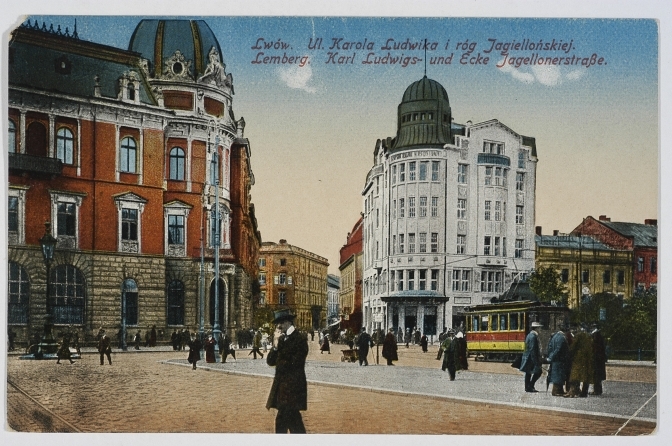
Halytska Savings Bank on the corner of Karlol-Ludvik and Jagelonska Streets. Postcard of 1916
In the first years of its existence, the Galician Savings Bank was located in building №2 on the street Sichovykh Striltsiv, and in 1889-1891, the prominent Lviv architect Yulian Zakharevych built his own house for the treasury on Svobody Avenue, 15.
Above the entrance to the house, you can see a sculptural group, which some call the Statue of Liberty. In fact, it symbolizes economic prosperity, as the Galician Savings Bank financed industrial establishments and construction.
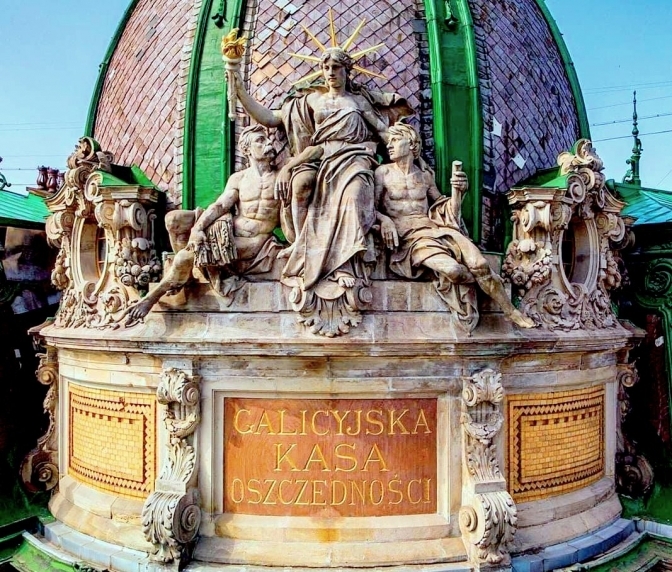
The sculptural group «Frugality», which is recklessly called the Lviv Statue of Liberty
In 1853, the Austrian National Bank opened its branch in Lviv, in 1862 the Austrian Credit Bank did the same, and three years later – the Anglo-Austrian joint-stock commercial bank. Among the banking institutions of that time, it’s worth noting the Galician joint-stock mortgage bank founded in 1867 in Lviv, located on the square Halytska, 15. It provided loans secured by land and jewels, accepted deposits in ordinary and foreign currency savings books and took securities for safekeeping. The currency could be bought and sold at the exchange office. The location next to the «George» Hotel made the bank popular among foreigners.
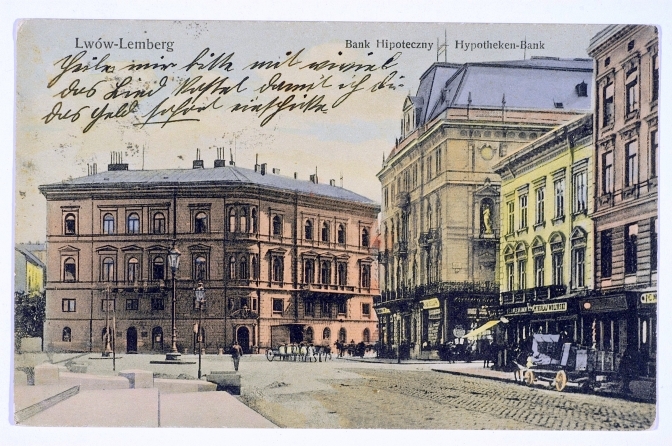
Halytskyi joint-stock mortgage bank, sq. Halytska, 15. Postcard of 1918.
On October 21, 1888, the Regional Diet made a decision to establish the Regional Bank of the Kingdom of Galicia and Volodymyr with the Grand Duchy of Krakow. To implement the resolution, the Diet provided 2 million kroner [the regional currency of that time]. The regional bank was located in a tenement house built by Yulius Tsybulskyi on the street Kostyushka, 11. Now, here is the main building of Ivan Boberskyi Lviv State University of Physical Culture.
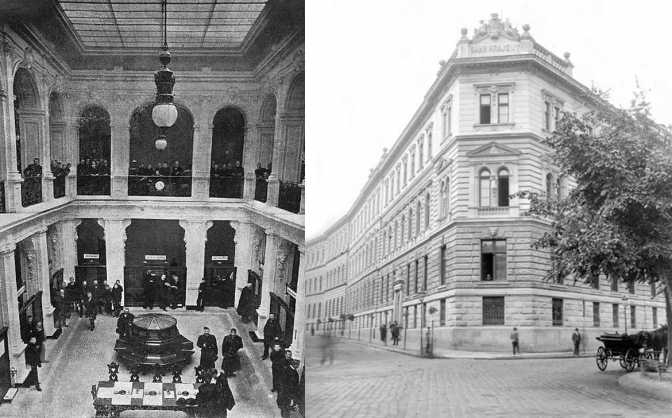
Regional Bank of the Kingdom of Galicia and Volodymyr. Photo from the consecration of the bank building in 1905 and the building itself
The formation of the Ukrainian credit cooperative in Western Ukraine began in the 1990s. The first savings and loan banks began to spread after the adoption of the new charter of the «Prosvita» society in 1891. The cooperative bank «Dniester», a limited liability company established in 1894, was of great importance for Ukrainian Lviv. The purpose of the institution was to help its members in the profitable placement of savings, to provide loans on favourable terms, to help in the organization of enterprises, and to promote the welfare of the Ukrainian peasantry, industry, and trade.
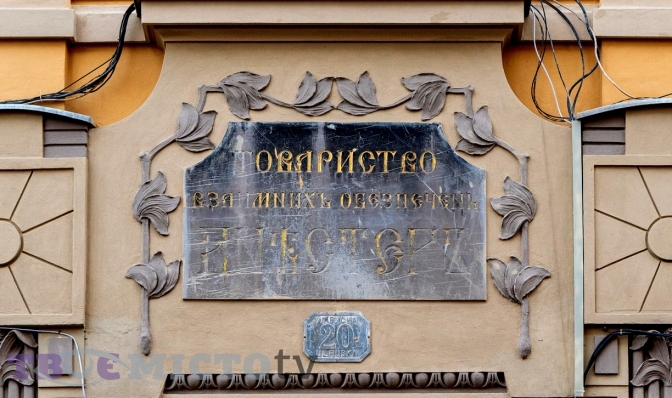
The inscription on the building of the mutual insurance company and bank «Dnister», str. Ruska, 20
Only a member of the «Dniester» mutual insurance company had the right to be a member of the cooperative bank. These two institutions had a common board. Metropolitan Andrey Sheptytskyi was the honorary president of both institutions.
In the first years of its existence, the bank «Dniester» was located in the tenement house «Prosvita» (Rynok Square, 10). In 1904, he bought a plot on the street Ruska, to build his own house. The project was developed by the firm of Ukrainian architect and entrepreneur Ivan Levynskyi. Construction was carried out during 1905-1906.
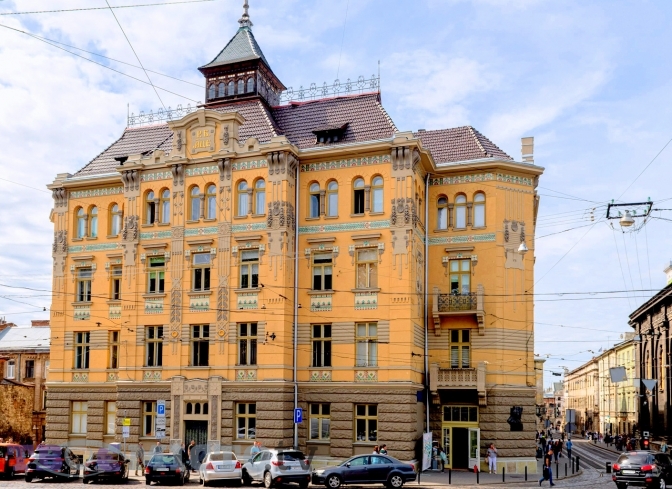
Since 1898, the centre of the Ukrainian credit cooperative in Galicia has been the Regional Credit Union, which at the beginning united 17 cooperatives, and within a year – 29 collective members. The bank was located in the «Prosvita» building at Rynok Square, 10. Since 1924, this institution was abbreviated as «Tsentrbank». The main activity of the institution was the organization and accreditation of cooperatives, control over their activities. Reserve funds were located on the street Sichovykh Striltsiv, 5.
In general, the list of Lviv’s banking institutions at the turn of the 19th and 20th centuries could be extended by mentioning the Prague Credit Bank, the Credit Society of Landowners of Galicia, the Italian Insurance Bank, and the modern street of Sichovykh Striltsiv can be safely called Lviv’s Wall Street, since more than a dozen banking institutions were located there.
By Petro Radkovets, translated by Vitalii Holich
The author’s column is a reflection of the author’s subjective position. The editors of «Tvoe Misto» do not always share the opinions expressed in the columns, and are ready to give those who disagree the opportunity for a reasoned answer.
Follow us on Facebook and Instagram. Lviv Now is an English-language website for Lviv, Ukraine’s «tech-friendly cultural hub.» It is produced by Tvoe Misto («Your City») media-hub, which also hosts regular problem-solving public forums to benefit the city and its people.












